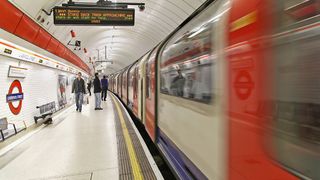TfL to track Wi-Fi connections of London Underground passengers
TfL could increase revenues by showing advertisers where biggest footfall is within stations

Transport for London (TfL) will monitor Wi-Fi connection request data from London Underground passengers' smartphones.
It will do this as part of a four-week trial, from Monday 21 November, in a bit to get "a more accurate understanding of how people move through stations, interchange between services and how crowding develops".
Currently, TfL only captures and analyses data of when people have taped in to enter a station, and when they tap out using data from the contactless machines which accept Oyster cards, debit cards and credit cards.
The trial will consist of collecting Wi-Fi connection requests from mobile devices as customers pass through stations. When a device has Wi-Fi enabled, it will keep searching for a Wi-Fi network by sending out a unique identifier better known as a Media Access Control (MAC) address to nearby routers.
That data is then "automatically de-personalised" to avoid any issues it could have with privacy, and is then analysed by TfL. The aim is to get a better picture of how passengers are using the Tube network and use this information to make any necessary changes.
TfL hopes to use this data to increase revenue from companies that advertise within stations it can do this by showing interested parties where the biggest footfall within a station is, and charge premium prices accordingly.
Shashi Verma, chief technology officer (CTO) at TfL said: "The short trial will help us understand whether Wi-Fi connection data could help us plan and operate our transport network more effectively for customers".
Get the ITPro. daily newsletter
Receive our latest news, industry updates, featured resources and more. Sign up today to receive our FREE report on AI cyber crime & security - newly updated for 2024.
"Historically, if we wanted to know how people travelled we would have to rely on paper surveys and manual counting, which is expensive, time-consuming and limited in detail and reliability. We hope the results of this trial will enable us to provide customers with even better information for journey planning and avoiding congestion," he added.




